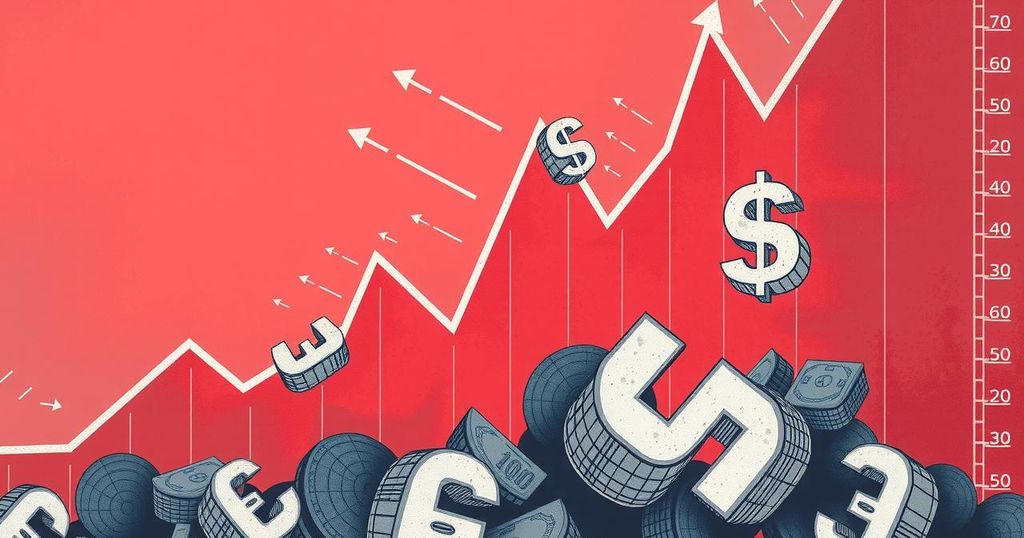U.S. Average Tariff Rate Hits 29%, Triggering Market Turmoil and Crypto Declines
The U.S. average tariff rate has surged to 29%, provoking a crisis in financial markets. The S&P 500 lost $2.5 trillion in value, while cryptocurrency markets experienced a drop of $140 billion. Investors are increasingly concerned about inflation and its implications for purchasing power, as volatility affects both traditional stock and cryptocurrency markets.
Recent financial developments have seen significant impacts on market dynamics, chiefly influenced by the increase in the U.S. average tariff rate to 29%, the highest recorded since the 1930s. This escalation has reverberated through various markets, including a substantial loss in the S&P 500, which incurred a decline of $2.5 trillion in market capitalization. Additionally, oil prices fell by 7% amid declining global demand, intensifying inflation concerns among consumers.
The rise in tariffs has had pronounced effects on cryptocurrency markets, with Bitcoin decreasing by 5% and Ethereum by 4.56%, culminating in a drop of total market capitalization from $2.78 trillion to $2.64 trillion—resulting in an elimination of $140 billion in value. This volatile atmosphere highlights the connection between tariff increases and cryptocurrency price fluctuations, with investors driven by fears surrounding inflation and the purchasing power of the average American.
The economic implications of these tariffs are significant, as the elevated U.S. tariff rate is projected to lead to increased consumer costs, severely impacting the average American’s financial situation. Traditional finance sectors are also experiencing turmoil, with inflation forecasts suggesting rates of 5.0%-5.5%. In particular, the uncertain atmosphere has been exacerbated by a sharp fall in stock values and risk assessments translating to one of the worst trading days since the pandemic-related crash in 2020.
In the cryptocurrency sector, nearly all assets have reported declines of up to 9% within a 24-hour span on April 3rd. Notably, dormant wallets have seen activity with significant transfers of Bitcoin, raising alarms about potential sell-offs by large investors. As the market navigates inflationary challenges and liquidity constraints, it remains to be seen how cryptocurrencies like Bitcoin will uphold their appeal as hedges against inflation amid this uncertainty. Furthermore, the market’s reaction to these tariffs and global economic disruptions will likely dictate the trajectory of cryptocurrency investments moving forward.
In summary, the unprecedented rise in U.S. tariffs has profoundly impacted both traditional and cryptocurrency markets. With the average tariff rate reaching 29%, the resulting economic fallout has sent ripples through stock prices and compelled significant market capitalization losses in cryptocurrencies. As inflation concerns mount and uncertainty persists, the ability of digital currencies to serve as a viable hedge against inflation may be put to the test, alongside their institutional appeal.
Original Source: www.bitcoinsensus.com








Post Comment